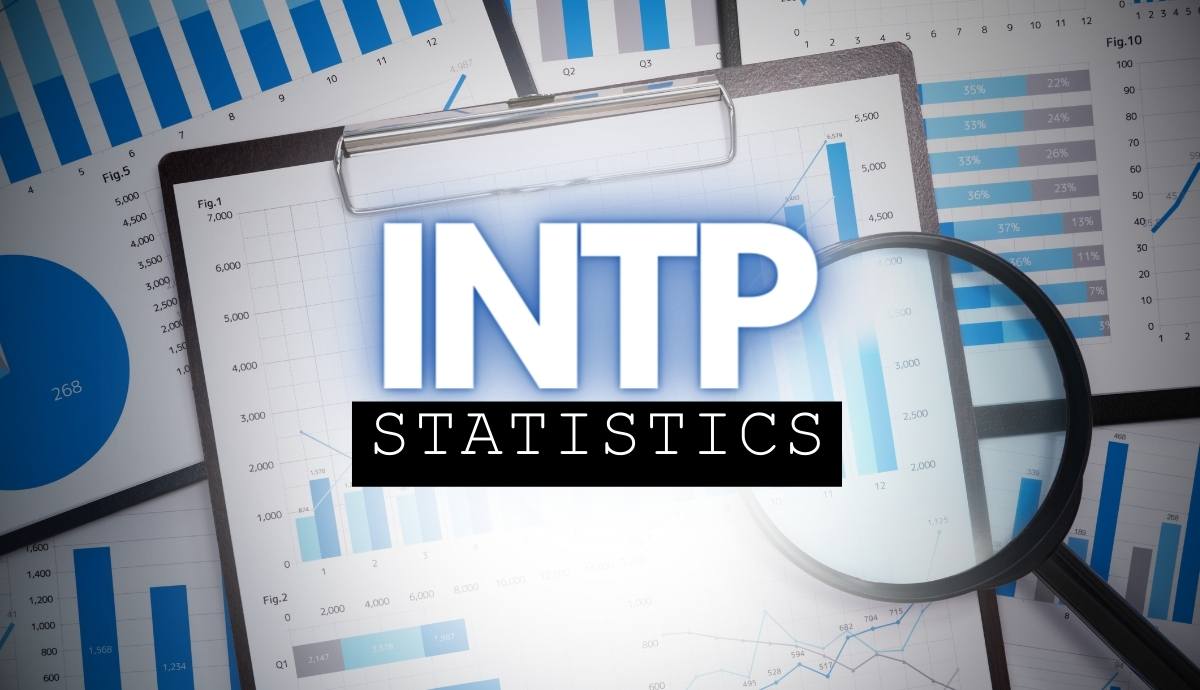The INTP is one of the rarest personality types in the Myers Briggs, especially among women. And as their minority status might suggest, their way of life is bound to run counter to the social norms of the majority. There are many studies out there that have tested various aspects of MBTI personality types. Here are 25 INTP statistics you might find interesting.
1. Among a test sample of combat veterans, INTPs and ISTPs were found to be more likely to have dropped out of school and to have been convicted of a crime unrelated to substance abuse than other veterans.
2. Compared to other veterans, ISTPs and INTPs were also found to score higher on a Rebelliousness factor derived from MMPI content scales, to score lower on a Phobic Symptoms scale, to be more likely to earn a diagnosis of combat-related post-traumatic stress disorder on DSM IIJ-R/IV Axis I, and to be labeled “antisocial” and “avoidant” on Axis II. [source]
3. People of Caucasian descent are more likely to be an INTP than any other racial demographic at 8.76%. [source]
4. The INTP is the personality type that registers the highest IQ scores of any other personality demographic.
5. Singapore has the smallest percentage of INTP-A in their population (1.08%). Tunisia has the highest (3.27%). Iran has the highest percentage of INTP-T (15.07%) while the United Arab Emirates has the least (1.3%). INTPs are 3.79% of the U.S. population.
6. A study testing for reading efficiency among the personality types found that the two which evidenced the most and the least efficiency were the INTP and its opposite type the ESTP.
7. In a study published in the Journal of Psychological Type, it was found that ISTPs and INTPs were the personality types significantly over-represented among professional inventors. [source]
8. Seventy-three participants who scored as ESTJ, ESFJ, INTP,, and INFP were assessed for PIC (a measure of cognitive complexity). The results were consistent with the hypothesis that INTP/INFP groups have significantly higher PIC scores than do ESTJ/ESFJ groups.
9. Isabel Myers’ father was an INTP. He was a physicist who worked as the director of the National Bureau of Standards in Washington D.C.
10. In a survey determining the MBTI types for all participants in a chemical dependency program, INTPs were over-represented among females and ESFJ females were under-represented.
11. In a study that examined the response of high school students, teachers, and school psychologists to type behavior, 3 student types (ENFP, ISTP, INTP) were found significantly more likely to have difficulty in the classroom and 4 student types (ENFP, ISTJ, INTJ, INTP) significantly more likely to be referred for counseling than other types.
12. ENTJs both found more businesses and fail more often, while INTJs and INTPs seem to be more successful in High-Tech firms. [source]
13. INTP men were found to be the most “oblivious” romantic partners of all the types. [source]
14. Analysis of Myers-Briggs Type Indicator (MBTI) information from the New Zealand database of MBTI records showed scientists tended to be INTJ or INTP. Managers tended to be ESTJ or ENTJ type.
15. The most common types reported in a sample of 931 gifted adolescents who attended a public residential academy were INTJ, INTP, INFP, ENFP, and ENTP. INTPs comprised 12.5% of the sample. [source]
16. A study measuring type and argumentativeness found that the four most argumentative types were ENTJ, INTJ, INTP, and ENTP. INTPs are therefore the 3rd most argumentative type. [source]
17. INTPs are the second most loyal customers (right after INTJs). A study tracked how long the people of each type had maintained a business relationship with an automobile dealership. It turned out that the average “customer organization relationship” length for INTPs was 13.0 years; for the INTJs, it was 18.0 years, five years longer. By comparison, the average customer relationship lasted only 5.7 years.
18. An actual scientific study has confirmed that cats are the INTP animal of choice. A Big Five study measured the personality preferences of 4,565 cat and dog lovers. Cat lovers, tended to have higher openness and higher neuroticism. Cat lovers, then, are more likely than average to be INPs. [source]
19. INTPs may actually be better than average at detecting lies. One study found that the more ENTP preferences you have, the better you are at spotting when someone is lying. [source]
20. INTPs are only the 10th most likely type to develop heart disease and hypertension.
21. In a survey of coping mechanisms used by the types, INTPs are the 2nd least likely type to share their problems with someone close. They are also the least likely to rely on religious beliefs.
22. One study found that INTPs were more likely than average to marry fellow INTPs. [source]
23. A study of workplace values found that although 61.5% of INTPs liked the work environment characteristic “Work as part of team,” they actually liked it the least of all types.
24. 73.7% of INTPs indicated that they liked the work environment characteristic “Clear structures and responsibility,” this however was actually the lowest percentage of all types.
25. It is a common misconception that INTPs are not religious. INTPs have a higher than average rate of agnosticism (16.2% are agnostic) and atheism (11.1% are atheistic). They are the type second most likely to be agnostic and the third most likely to be atheistic. But, 72.7% of INTPs do believe in a higher spiritual power whether that comes in the form of traditional orthodoxy or a general spirituality.
Want to know your astrology placements? You can generate your astrology chart here with our free birth chart generator tool.
Related Posts:
- The Moral Compass of Each MBTI Type
- Secrets About Each MBTI Type
- How Each MBTI Type Processes Emotions
- What Each MBTI Type Seeks In A Soulmate
- The Fatal Flaw of Each MBTI Type In Relationships
- The Hidden Superpower of Each MBTI Type
- American Presidents Ranked By Zodiac Sign - January 20, 2025
- ESTP and ESFP in love: 6 Dynamics of Their Relationship - September 4, 2024
- ISFP and ISTP in love: 5 Dynamics of their Relationship. - August 28, 2024






One thought on “25 Interesting INTP Statistics & Facts”